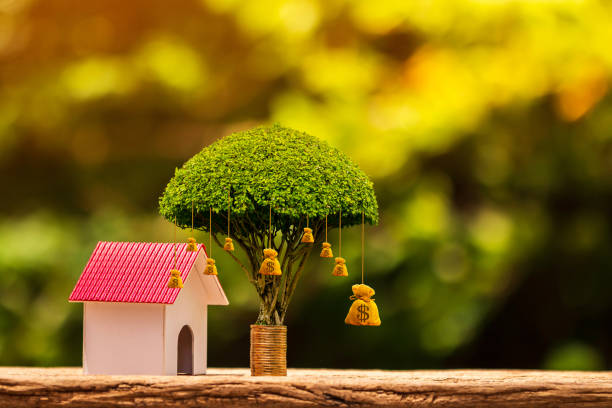Sustainable construction is no longer just a buzzword; it’s a necessity in today’s world. With increasing environmental concerns and fewer resources, the construction industry is under pressure to adopt practices that minimize its impact on the planet. One crucial aspect of sustainable construction is the use of green building materials.
Key Statistics on Green Building Materials
- Buildings and the energy needed to operate them account for approximately 40% of global carbon emissions, according to the World Green Building Council.
- A new green building or renovation increases its asset value by over 9%, according to owners.
- Over $86 billion was invested in green building projects in the United States in 2021.
- There is an average cost difference of 1% to 12% between building green and non-green.
- Business Wire reports that 84% of homeowners value living in a green home. A green community would also be more expensive for 64% of respondents.
- Up to 35% of CO2 emissions can be reduced by green buildings by reducing their water consumption and CO2 emissions.
- New green buildings save an average of 10.5% in operating costs in their first year.
Importance of Green Building Materials
Green building materials are the cornerstone of eco-friendly construction. They offer numerous benefits that extend beyond environmental considerations. From reducing carbon footprints to improving occupant health and economic savings, there are various benefits of green building materials.
What are Green Building Materials
Green building materials are products that are manufactured, sourced, and applied in a manner that minimizes their impact on the environment. They are characterized by their sustainable sourcing, energy efficiency, and recyclability or biodegradability.
Life Cycle Assessment (LCA) in Material Selection
Life cycle assessment (LCA) is a crucial tool in evaluating the environmental impact of green building materials. It considers the entire life cycle of a material, from extraction or harvesting to production, transportation, installation, use, and eventual disposal or recycling.
Advantages of Green Building Materials
Environmental Benefits
1. Reduced Carbon Footprint
Green building materials typically have less carbon footprint as opposed to traditional materials. This is because they often require fewer resources to manufacture, generate less waste during production, and may be sourced locally to reduce transportation emissions.
2. Preservation of Natural Resources
By using renewable or recycled materials, green building practices help conserve natural resources such as water, timber, and minerals. This reduces the strain on ecosystems and promotes long-term environmental sustainability.
3. Reducing Pollution
Many green building materials are manufactured using processes that minimize pollution and emissions. Additionally, their use can help reduce the release of harmful chemicals into the environment, thus mitigating pollution and improving overall air and water quality.
Health Benefits
4. Improved Indoor Air Quality
Green building materials are often low in volatile organic compounds (VOCs) and other harmful emissions, leading to improved indoor air quality. This is especially beneficial for occupants, as poor indoor air quality can contribute to respiratory issues and other health problems.
5. Reduction in Harmful Chemical Exposure
Traditional construction materials may contain hazardous chemicals such as formaldehyde and lead. By opting for green building materials, exposure to these harmful substances is minimized, creating safer and healthier indoor environments.
6. Enhanced Well-being of Occupants
The use of green building materials has been linked to improved occupant comfort and well-being. From natural lighting and ventilation to biophilic design elements, these materials can create spaces that promote physical and mental health.
Economic Benefits
7. Long-term Cost Savings
While the upfront costs of green building materials may be higher, they often result in long-term cost savings. Energy-efficient materials can reduce utility bills, while durable materials require less frequent replacement and maintenance, saving both time and money in the long run.
8. Increased Property Value
Properties constructed using green building materials are increasingly sought after in the real estate market. Their energy efficiency, environmental sustainability, and potential for cost savings can lead to higher resale values and greater marketability.
Government Incentives and Certifications
Many governments offer incentives and rebates to encourage the use of green building materials and sustainable construction practices. Additionally, certifications such as Leadership in Energy and Environmental Design (LEED) provide recognition for buildings that meet certain green building criteria, further incentivizing their adoption.
Certification Criteria for Green Buildings
There are indeed many green building certifications, but all are aimed at ensuring that buildings are built and operated in an environmentally responsible manner. A green building certification typically addresses the following aspects:
- Water efficiency
- Energy efficiency
- Use of eco-friendly resources and materials
- Sustainable practices
- Environmental quality of indoor air
- Site choice and construction
- Design and innovation
- Environmental and climate considerations
Types of Green Building Materials

Recycled Materials
1. Recycled Concrete
Concrete is a widely used construction material, but its production has a significant environmental impact due to the extraction of raw materials and the energy-intensive manufacturing process. Recycled concrete addresses this issue by using crushed concrete aggregate from demolished structures, reducing the need for virgin materials and minimizing waste.
2. Reclaimed Wood
Reclaimed wood offers a sustainable alternative to newly harvested timber. You can get these from barns and older buildings. It is a great option because reclaimed it retains its natural beauty and character while reducing the high demand for virgin timber and preventing old wood from ending up in landfills.
3. Recycled Metal
Metal is highly recyclable, which makes it a reliable green building material. You can use recycled metal in various construction applications, from structural elements like beams and columns to decorative finishes and fixtures. By using recycled metal, the environmental impact of mining and processing virgin ore is significantly reduced.
Renewable Materials
4. Bamboo
Bamboo is a fast-growing grass that can be harvested sustainably for use in construction. With its rapid growth rate and natural strength, bamboo is an excellent alternative to traditional hardwoods for flooring, decking, and structural components. Additionally, bamboo cultivation can help mitigate deforestation and promote biodiversity.
5. Cork
You can harvest cork from oak tree barks without endangering the entire tree, making it a renewable and environmentally friendly material. Most construction work uses it as a flooring material due to its natural resilience, thermal insulation properties, and sound absorption qualities. Cork flooring is durable, comfortable underfoot, and biodegradable at the end of its life cycle.
6. Straw Bales
Straw bales are an eco-friendly and sustainable building material made from the stalks of cereal grains such as wheat, rice, and barley. When compacted and stacked, straw bales create highly insulated walls that can lower the costs of heating and cooling. Additionally, straw bales are readily available, affordable, and biodegradable, making them an attractive option for sustainable construction.
Low-Impact Materials
7. Hempcrete
It consists of a composite substance produced from hemp hurds mixed with water and lime. It offers excellent thermal insulation properties, is lightweight yet durable, and is resistant to pests, mold, and fire. Also, hempcrete can be carbon-negative, as the hemp plants absorb more carbon dioxide during growth than is emitted during the production and curing process.
8. Rammed Earth
Construction using rammed earth has to do with compacting a mixture of earth, gravel, sand, and clay into solid walls using manual or mechanical methods. Rammed earth structures are highly durable, energy-efficient, and have a distinctive aesthetic appeal. This ancient building technique is experiencing a resurgence due to its low environmental impact and thermal mass properties.
9. Ferrock
Ferrock is a novel green building material that combines recycled steel dust with various industrial byproducts such as silica, limestone, and recycled glass. When exposed to carbon dioxide, Ferrock undergoes a mineralization process that binds the ingredients together, forming a durable and carbon-negative material. Ferrock exhibits properties similar to concrete but with a lower environmental footprint and the ability to sequester carbon dioxide.
Innovative Green Building Technologies
1. Smart Glass
Smart glass, also known as switchable glass or dynamic glass, is an innovative building material that can change its properties in response to external stimuli such as light, heat, or electricity. By adjusting its transparency, tint, or thermal insulation properties, smart glass can optimize natural light, reduce solar heat gain, and enhance energy efficiency in buildings.
2. Photovoltaic Panels
Photovoltaic (PV) panels, commonly known as solar panels, convert sunlight into electricity using semiconductor materials such as silicon. PV panels can be integrated into building facades, roofs, or awnings to generate clean and renewable energy on-site. As solar technology advances and costs continue to decline, PV panels are becoming an increasingly popular choice for sustainable building projects.
3. Green (Eco-Friendly) Roofs
Green eco-friendly roofs, also known as vegetated roofs or living roofs, are roofs that are covered with vegetation, and supported by a waterproofing membrane. Green roofs provide numerous environmental benefits, including stormwater management, improved air quality, and thermal insulation. They also create habitats for wildlife, reduce heat in urban islands, and enhance the aesthetic appeal of buildings.
4. Modular Construction
Modular construction, also known as prefabricated or off-site construction, involves the fabrication of building components or modules in a factory setting and their assembly on-site. Modular construction offers several advantages, including reduced construction waste, shorter construction timelines, and improved quality control. It also allows for greater flexibility and customization in design, making it a sustainable and cost-effective building method.
Integration of Green Building Materials in Design and Construction
- Architectural considerations
Incorporating green building materials into architectural design requires careful consideration of factors such as aesthetics, functionality, and sustainability. Architects must balance the visual appeal of materials with their environmental performance, ensuring that the chosen materials contribute to both the form and function of the building.
- Compatibility with building systems
Green building materials should be compatible with other building systems and technologies to ensure seamless integration and optimal performance. From structural integrity to thermal efficiency and moisture management, the compatibility of materials with building systems is essential for the overall sustainability and durability of the structure.
- Construction techniques and challenges
The adoption of green building materials may require adjustments to traditional construction techniques and practices. Contractors and builders must be knowledgeable about the unique properties and requirements of these materials and employ appropriate construction methods to achieve optimal results.
Challenges such as sourcing, handling, and installing green building materials may arise, requiring careful planning and coordination throughout the construction process.
Case Studies of Successful Green Building Projects
- LEED-certified buildings
LEED certification is a globally recognized rating system for green building performance. LEED-certified buildings demonstrate leadership in sustainability by incorporating green building materials, energy-efficient systems, and environmentally responsible practices. Case studies of LEED-certified projects showcase the diverse applications and advantages of green building materials in real-world construction.
- Passive house design
Passive house design is a rigorous building standard that focuses on achieving exceptional energy efficiency and comfort without relying on active heating or cooling systems. Green building materials play a critical role in passive house construction, providing insulation, air sealing, and thermal mass to reduce energy usage and maintain indoor comfort. Case studies of passive house projects highlight the effectiveness of green building materials in achieving high-performance, low-energy buildings.
- Zero-energy buildings
Zero-energy buildings (ZEBs) are designed to produce as much energy as they consume over a year, resulting in net-zero energy consumption. Green building materials, energy-efficient technologies, and renewable energy systems are essential components of ZEBs, enabling them to achieve high levels of energy performance and reduce reliance on fossil fuels. Case studies of zero-energy buildings demonstrate the feasibility and benefits of adopting a holistic approach to sustainable design and construction.
Challenges and Limitations
1. Cost Barriers
One of the primary challenges associated with green building materials is the perception of higher upfront costs compared to traditional materials. While green building materials may have a higher initial investment, they often result in long-term cost savings through reduced energy consumption, maintenance, and operational expenses. Overcoming cost barriers requires a shift in mindset and greater awareness of the economic benefits of sustainability.
2. Availability and Sourcing
The availability and sourcing of green building materials can vary depending on geographic location, market demand, and supply chain logistics. In some regions, certain materials may be readily available and cost-effective, while in others, they may be scarce or expensive to procure. Sustainable sourcing practices, local manufacturing, and innovative solutions are needed to address these challenges and ensure the widespread adoption of green building materials.
3. Performance and Durability Concerns
While many green building materials offer environmental benefits, their performance and durability may vary depending on factors such as climate, exposure, and usage. It is essential to select materials that meet the specific requirements of each project and perform adequately over their intended lifespan. Testing, certification, and ongoing monitoring can help address performance and durability concerns and ensure the long-term success of green building projects.
Future Trends and Developments in Green Building Materials
1. Advancements in Material Science
Ongoing research and development in material science are driving innovations in green building materials, leading to the discovery of new materials and improved formulations. From bio-based composites to advanced nanomaterials, the future of green building materials holds promise for enhanced performance, sustainability, and functionality.
2. Adoption of Circular Economy Principles
The adoption of circular economy principles is reshaping the way materials are sourced, manufactured, used, and disposed of in the construction industry. Circular building practices prioritize resource efficiency, waste reduction, and material reuse, creating a closed-loop system that minimizes environmental impact and maximizes value. From cradle-to-cradle design to product stewardship and end-of-life recycling, the circular economy offers a holistic approach to sustainable construction.
3. Integration of IoT and Smart Technologies
The integration of the Internet of Things (IoT) and smart technologies is revolutionizing the way buildings are designed, constructed, and operated. Smart sensors, building automation systems, and data analytics platforms enable real-time monitoring, optimization, and control of building performance. By harnessing the power of data and connectivity, green building materials can be utilized more effectively, leading to greater energy efficiency, occupant comfort, and environmental sustainability.
Conclusion
As the global population and urbanization increase, the demand for sustainable construction solutions continues to rise. Green building materials offer a pathway to more environmentally responsible and resource-efficient buildings, helping to mitigate climate change, protect natural resources, and enhance the quality of life for current and future generations.
Green building materials will continue to play a significant role in shaping our built environment in the future. It is possible to create a greener, healthier, and more resilient future for all if we embrace innovation, prioritize sustainability, and reimagine how we design, construct, and inhabit buildings.







